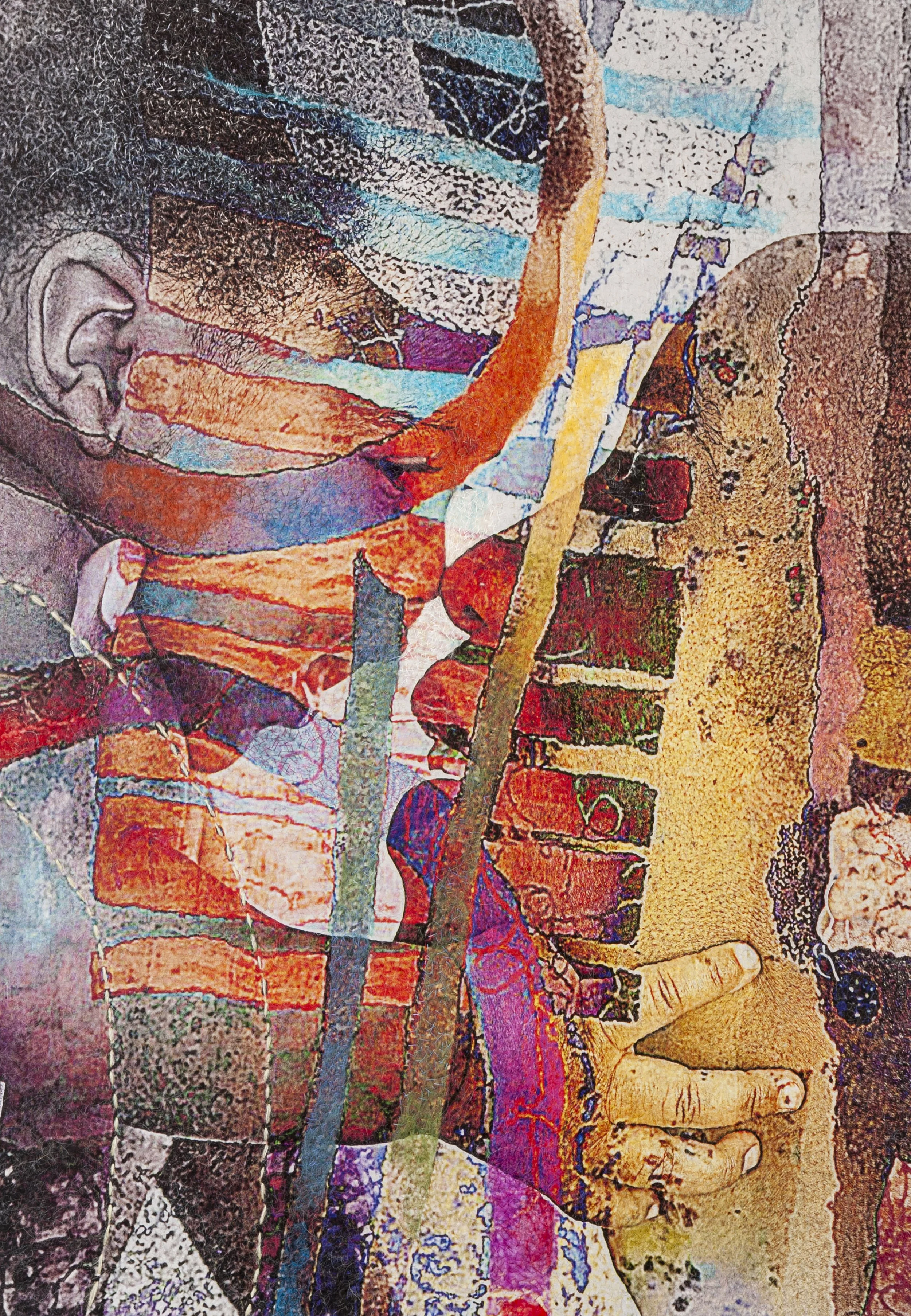Five Times More
Maggie Scott’s practice is informed by the experience of being black, British and a woman. With Five Times More she depicts the intimate relationship between mother and child, reflecting on both personal and collective experiences of pregnancy, childbirth and motherhood.
Scott’s technical practice is unparalleled in the landscape of contemporary British art, sitting at the boundary of tapestry and digital media, she employs a combination of photography, digital collage and silk and then injects colour by laboriously pushing vibrant merino wool fibres through silk in a process known as nuno felting. The intensely physical process of felting is followed by the careful process of using stich to emphasise the smaller details of an image, evoking both the physicality of childbirth and the careful attention and tenderness of what follows. In working with fibre Scott pushes a medium traditionally associated with craft into the realm of fine art. As a textile artist Scott employs distinctly feminine materials, but with soft images she speaks hard truths.
Birth is the most innate experience of human existence yet for centuries childbirth has also been the most dangerous undertaking of a woman’s life. Rates of maternal mortality have dropped dramatically in Britain since the mid 18th century. However, the effects of modern medicine have not been felt equally. In 2019 MBRACE UK published data within its Perinatal Mortality report which revealed that people of colour remain at a much higher risk during pregnancy and childbirth within the British healthcare system. Most disturbingly the report revealed that in the United Kingdom a black woman is five times more likely to die during childbirth than her white counterpart.
Five Times More humanises the statistics published by MBRACE UK, illustrating abstract numbers with the faces of young healthy women. Tender works position the viewer as a voyeur observing a private moment between mother and child; in some works a mother to be contemplates her swollen belly while in others she embraces her young child. The works can be read as a celebration of the bond between mother and child, yet they are shrouded in ambiguity, whether the fate of the subjects is real or imagined is unknown. Five Times and its sister work, Sleeping Beauties address this ambiguity most explicitly as the viewer is forced to contemplate the death of the women portrayed in the latter.
Waiting, 2021
Stats, 2021, Nuno felted merino wool on silk120cm x 170cm
One Hundred and Twenty One, 2021, Nuno felted merino wool on silk
110cm x 175cm
Five Times //1, 2020, Nuno felted merino wool on silk, 120 x 170cm
Five Times //2, 2021, Nuno felted merino wool on silk, 120 x 170cm
Sleeping Beauties //1, 2021, Nuno Felted Merino Wool on Silk, 120 x 175cm
Five Times More //1, 2021, Nuno felted merino wool on silk, 119 x 166cm
Sleeping Beauties //2, 2021
Sleeping Beauties //3, 2021
Five Times More //2, 2021














